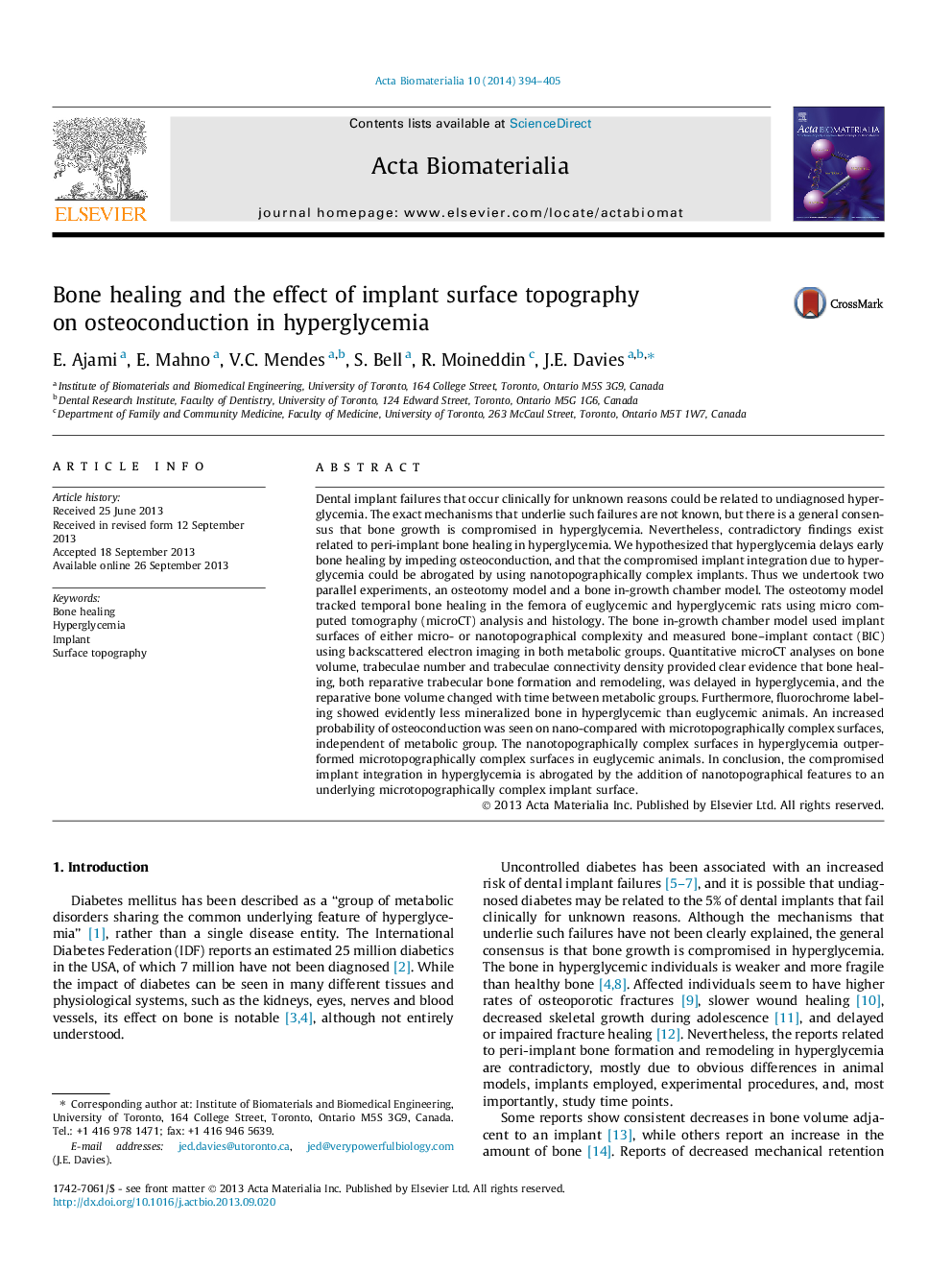| کد مقاله | کد نشریه | سال انتشار | مقاله انگلیسی | نسخه تمام متن |
|---|---|---|---|---|
| 10159434 | 48 | 2014 | 12 صفحه PDF | دانلود رایگان |
عنوان انگلیسی مقاله ISI
Bone healing and the effect of implant surface topography on osteoconduction in hyperglycemia
ترجمه فارسی عنوان
بهبودی استخوان و تأثیر توپوگرافی سطح ایمپلنت بر استخوان سازی در هیپرگلیسمی
دانلود مقاله + سفارش ترجمه
دانلود مقاله ISI انگلیسی
رایگان برای ایرانیان
کلمات کلیدی
بهبود استخوان، هیپرگلیسمی، ایمپلنت، توپوگرافی سطحی،
موضوعات مرتبط
مهندسی و علوم پایه
مهندسی شیمی
بیو مهندسی (مهندسی زیستی)
چکیده انگلیسی
Dental implant failures that occur clinically for unknown reasons could be related to undiagnosed hyperglycemia. The exact mechanisms that underlie such failures are not known, but there is a general consensus that bone growth is compromised in hyperglycemia. Nevertheless, contradictory findings exist related to peri-implant bone healing in hyperglycemia. We hypothesized that hyperglycemia delays early bone healing by impeding osteoconduction, and that the compromised implant integration due to hyperglycemia could be abrogated by using nanotopographically complex implants. Thus we undertook two parallel experiments, an osteotomy model and a bone in-growth chamber model. The osteotomy model tracked temporal bone healing in the femora of euglycemic and hyperglycemic rats using micro computed tomography (microCT) analysis and histology. The bone in-growth chamber model used implant surfaces of either micro- or nanotopographical complexity and measured bone-implant contact (BIC) using backscattered electron imaging in both metabolic groups. Quantitative microCT analyses on bone volume, trabeculae number and trabeculae connectivity density provided clear evidence that bone healing, both reparative trabecular bone formation and remodeling, was delayed in hyperglycemia, and the reparative bone volume changed with time between metabolic groups. Furthermore, fluorochrome labeling showed evidently less mineralized bone in hyperglycemic than euglycemic animals. An increased probability of osteoconduction was seen on nano-compared with microtopographically complex surfaces, independent of metabolic group. The nanotopographically complex surfaces in hyperglycemia outperformed microtopographically complex surfaces in euglycemic animals. In conclusion, the compromised implant integration in hyperglycemia is abrogated by the addition of nanotopographical features to an underlying microtopographically complex implant surface.
ناشر
Database: Elsevier - ScienceDirect (ساینس دایرکت)
Journal: Acta Biomaterialia - Volume 10, Issue 1, January 2014, Pages 394-405
Journal: Acta Biomaterialia - Volume 10, Issue 1, January 2014, Pages 394-405
نویسندگان
E. Ajami, E. Mahno, V.C. Mendes, S. Bell, R. Moineddin, J.E. Davies,
